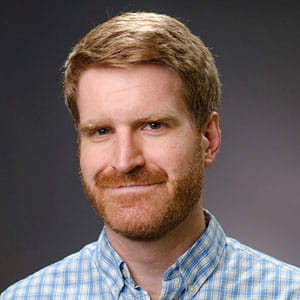Great Works Symposium brings disciplines together to ponder media world


You may have noticed, at some point before you began reading these words on an electronic screen, that the state of communications media is not what it used to be.
How has this new communications world changed how we learn about weighty subjects such as war? What can we say about the future of television in the age of Netflix, Hulu and smartphone videos? In an avalanche of media messages, what’s worth holding onto? And what does it mean for the world when anyone is a Tweet or Instagram away from being a media creator?
These are the kinds of questions that Drexel students and faculty, plus an array of guest speakers, will ponder as part of this year’s Great Works Symposium.
The symposium is a unique sequence of four interdisciplinary courses centered around a common theme each academic year. This year’s is titled “Media: Past, Present and Future,” and Drexel's Rudman Institute for Entertainment Industry Studies is playing a big role in its planning.
“It’s a topic that can speak to pretty much any student on campus,” said Kevin Egan, who oversees the Great Works Symposium as acting director for the Center of Interdisciplinary Inquiry in the Pennoni Honors College.
That’s quite appropriate for the symposium series, as its courses are open to all students regardless of their major.
The idea behind the symposium is to give students an opportunity to think about how their chosen field fits into an interdisciplinary topic and to interact with people they might not see too often during their normal course of study. Typically, Egan said, a Great Works Symposium course contains students from every college or school at the University.
“I don’t think that happens too often in a classroom at Drexel,” Egan said.
The symposium courses are unique not just because of who takes them, but also because of who teaches them. The courses are team-taught by several instructors from different subject areas. And class periods often include a visit from a guest speaker with expertise on that week’s topic.
“They get to have access to someone they wouldn’t normally in a classroom setting,” Egan said.
Further in keeping with the open, interdisciplinary nature of the courses, the guest-speaker visits are open to the public, so anyone can come, Egan said. Those visits will be advertised on campus.
Visitors for the fall-term course include former TV news executives, a playwright, filmmakers and more. A list is available online. The class will meet in the Papadakis Integrated Sciences Building, room 104.
The 2012-13 symposium was themed “Frontiers in Science,” with courses concentrating on the hunt for extraterrestrial life, how knowledge is displayed in museums and what could be learned from “celebrity” scientists such as Galileo and Einstein.
Each year’s symposium is planned with the help of a “faculty fellow” chosen from a different discipline. This year, that fellow is Karen Curry, director of the Rudman Institute in the Westphal College of Media Arts & Design and a former TV news producer. She has helped plan a series that will begin with a course in the fall quarter called “Imaging War,” examining how the subject of war has been depicted by media ranging from photography to television to video games. Courses coming in the winter, spring and summer terms will examine how television will handle the emergence of digital video platforms and other new competition, how people can be smart consumers of media in today’s age and how the two-way nature of digital media creates new possibilities.
It’s a topic that touches every field, Egan said, and it’s perhaps never been more timely.
“Right now, as a moment in history, we’re at a really interesting point where media’s actually going through a pretty rapid transformation,” Egan said.
His hope, he said, is that the students who take one or more of the courses come away from the experience with a better idea of how to make sense of the swirling media landscape.
“That would be my No. 1 goal, that they would become sort of savvy consumers of information and become a little bit more critical about how they view the media,” Egan said.
In This Article
Drexel News is produced by
University Marketing and Communications.
